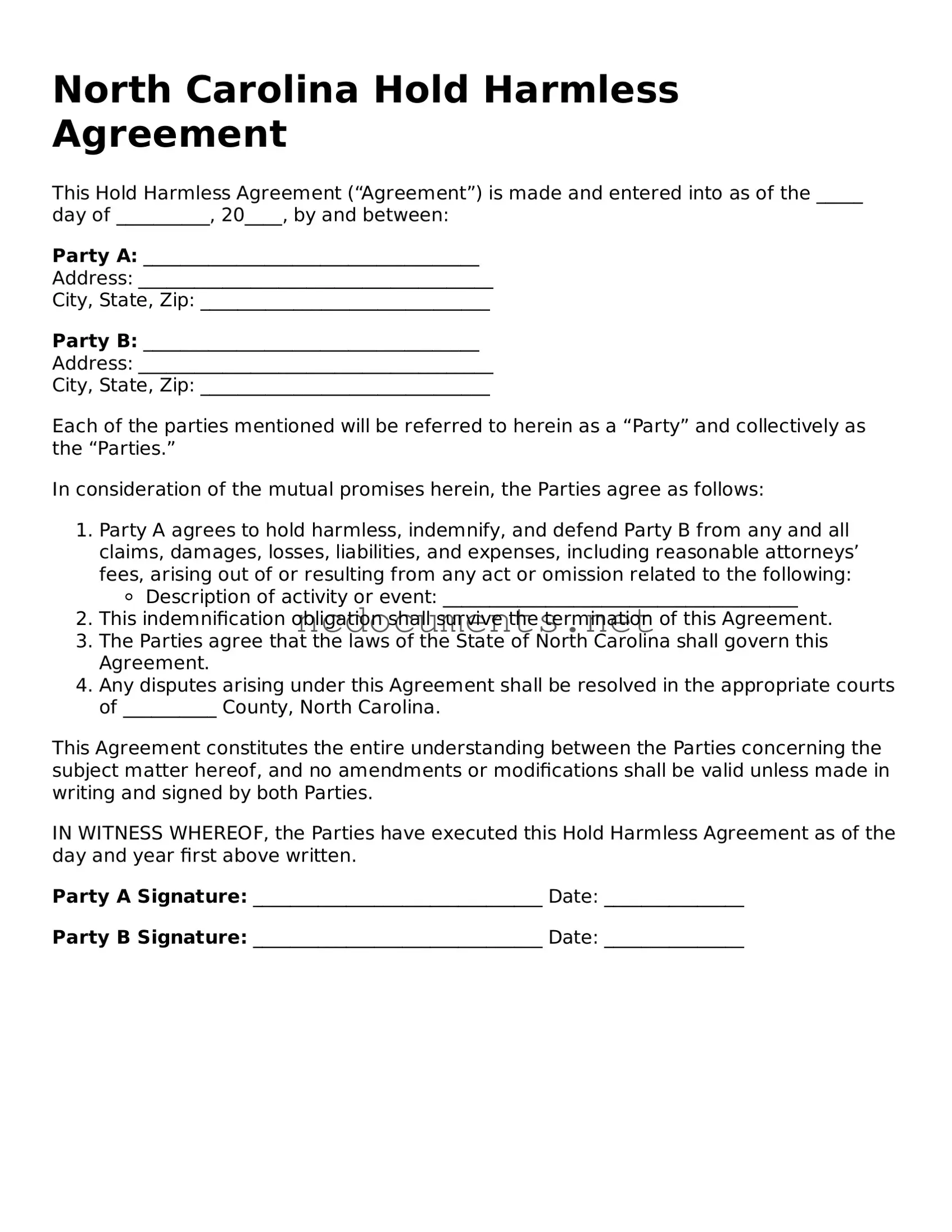Filling out the North Carolina Hold Harmless Agreement form can be straightforward, but there are common mistakes that individuals often make. One frequent error is failing to read the entire document before signing. Skipping sections may lead to misunderstandings about the terms and conditions outlined in the agreement.
Another mistake is neglecting to provide accurate personal information. This includes names, addresses, and contact details. Incorrect information can result in delays or complications if any issues arise later. It is essential to ensure that all information is current and correctly spelled.
Some individuals do not clearly understand the scope of the agreement. They may assume that it covers more than it actually does. It is crucial to grasp what liabilities are being waived and under what circumstances. Misinterpretation can lead to unintended consequences.
Additionally, people sometimes forget to date the agreement. A missing date can raise questions about the validity of the document. It is important to include the date to establish when the agreement was made.
Another common oversight is not having the agreement witnessed or notarized when required. Certain situations may necessitate a witness or notary to validate the document. Failing to do so can render the agreement unenforceable.
Some individuals may rush through the signing process, not taking the time to review their rights and obligations. A thorough review can help avoid future disputes. Taking a moment to reflect on the implications of the agreement is advisable.
In addition, people sometimes overlook the need for additional signatures. If multiple parties are involved, all necessary signatures must be obtained. An incomplete agreement may not hold up in a legal context.
Lastly, individuals might not keep a copy of the signed agreement for their records. Retaining a copy is vital for reference in case of any disputes or misunderstandings later on. Keeping organized records can help ensure clarity and accountability.
